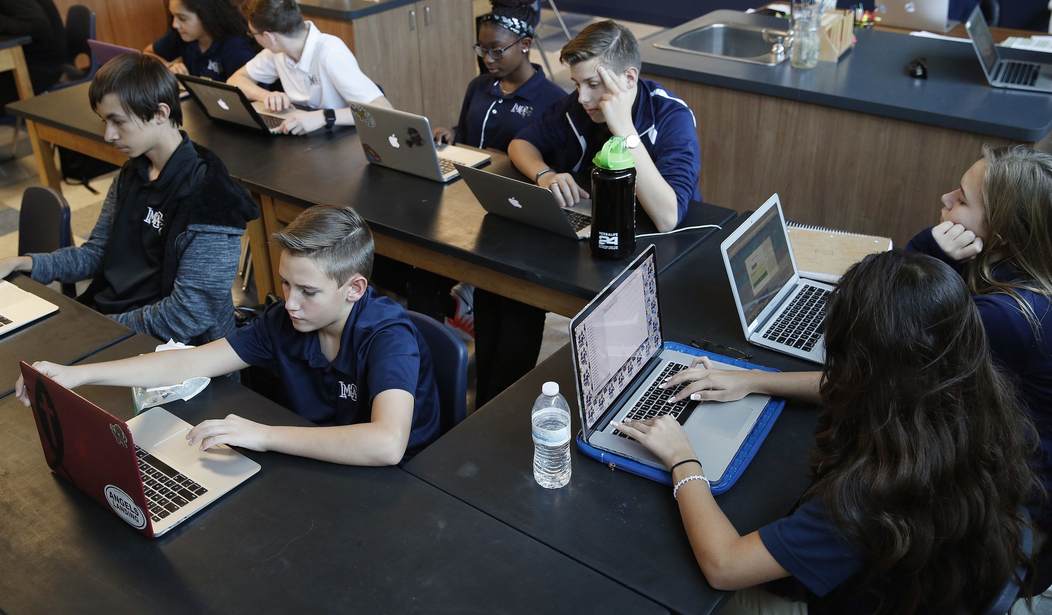In the 2023-2024 school year, we continue to see the education landscape evolving, and remote learning continues to play an increasingly pivotal role in the process. As we found out during the historic COVID-19 pandemic, and now with the potential resurgence of new mutations, it is critical to keep remote education options available.
While virtual learning brings many benefits, it also has drawbacks, namely the increased threat of cyberattacks. And despite the Biden administration’s claims of making cybersecurity a high-priority matter, to put it bluntly, they haven’t done nearly enough. In the first two-thirds of 2023, a staggering 48 school districts have been hit by ransomware attacks, three more than in all of 2022.
These hacks have seen critically sensitive information like medical records, psychiatric evaluations, and sexual assault reports accessed by bad actors. So, with a federal government that has clearly failed to improve security conditions still in charge, the best way to ensure a secure learning environment for the 2023-2024 school year must revolve around schools, parents, and students working towards better protection from cyber threats.
Even before COVID-19, the educational apparatus had become a major target for cybercriminals. K-12 schools and colleges all have been susceptible to cyberattacks in recent years.
The consequences of these hacks can be devastating, as they not only compromise personal information but also disrupt the learning process. Therefore, schools must take proactive measures to safeguard their networks.
One of the ways that institutions can address this is by increasing cyber training for both staff and students. Integrating this learning into the curriculum earlier, especially with elementary school children handling online devices at younger ages than ever, is one obvious way to increase safety.
Teachers and administrative personnel must also receive additional training to stay ahead of the latest cyber threats and learn the best possible practices for preventing and responding to hacks. Empowering the American education community with knowledge and awareness should create a culture of cybersecurity that acts as a strong defense at the local level.
Increasing investment in cybersecurity systems and protocols, including updating and patching software, employing secure firewalls and detection systems, and implementing new and more robust password policies, is also key. Regularly executing security audits is also essential to addressing any weaknesses before hackers exploit them.
Related: LastPass Vault Breached via Employee’s Home Computer, Giving Keys to the Kingdom to Hackers
With education starting in the home, parents must also protect their kids from cyber threats. As students increasingly use personal devices for remote learning, parents must ensure the security of these devices and educate their children about online safety. Here are some important steps parents can take:
Setting boundaries for kids: Parents must make rules for online time and what activities are allowed. Teaching children the importance of not sharing personal data online and the potential consequences of doing so is vital.
Using parental control apps or software: Installing parental control apps on devices will help parents monitor and restrict access to certain apps and websites.
Educating your kids: Speak to your children about cyberbullying, online predators, and email phishing scams. Encourage an active line of communication so your kids feel comfortable reporting suspicious online behavior they may encounter.
Secure devices: Check all devices used for remote learning to ensure they are up to date with security patches and have strong passwords. Teach your kids about two-factor authentication to add an additional layer of security.
Students must also take a more significant role in protecting themselves from cyber-attacks. Digital literacy is as important as traditional literacy nowadays, and students must be proactive in safeguarding themselves online. Here are some steps students can take:
Practice improved password hygiene: Creating strong and unique passwords for all online accounts and learning to use password manager software to keep track of them is vital.
Watch out for phishing attempts: Don’t immediately trust unsolicited emails or links from unknown sources. Verify a message sender’s identity before opening links or sharing your personal information.
Update your software: Regularly update operating systems and all programs on your devices to patch vulnerabilities that hackers could exploit.
Secure social media accounts: Adjust privacy settings on social media accounts in an effort to limit what data is visible to the public. Don’t ever share information that could be used against you.
Report suspicious activity: If you encounter any instances of cyberbullying, harassment, or other online threats, immediately report them to your parent or guardian or perhaps even a trusted school authority figure. Reporting these incidents is crucial to stopping them and protecting others.
The 2023-2024 school year brings opportunities for learning and growth, but it also presents challenges in the form of preventing hacking attacks, both domestic and overseas. Protecting the future of education and ensuring a safe learning environment requires the entire learning ecosystem working in unison. Tax-payer funds must not be wasted when investing in cyber education and security, parents must take a larger role in educating and protecting their children online, and students must become responsible digital citizens. By working together to take proactive measures, we all can help navigate the digital landscape safely and help to ensure that learning remains unimpeded by cyber threats.









Join the conversation as a VIP Member